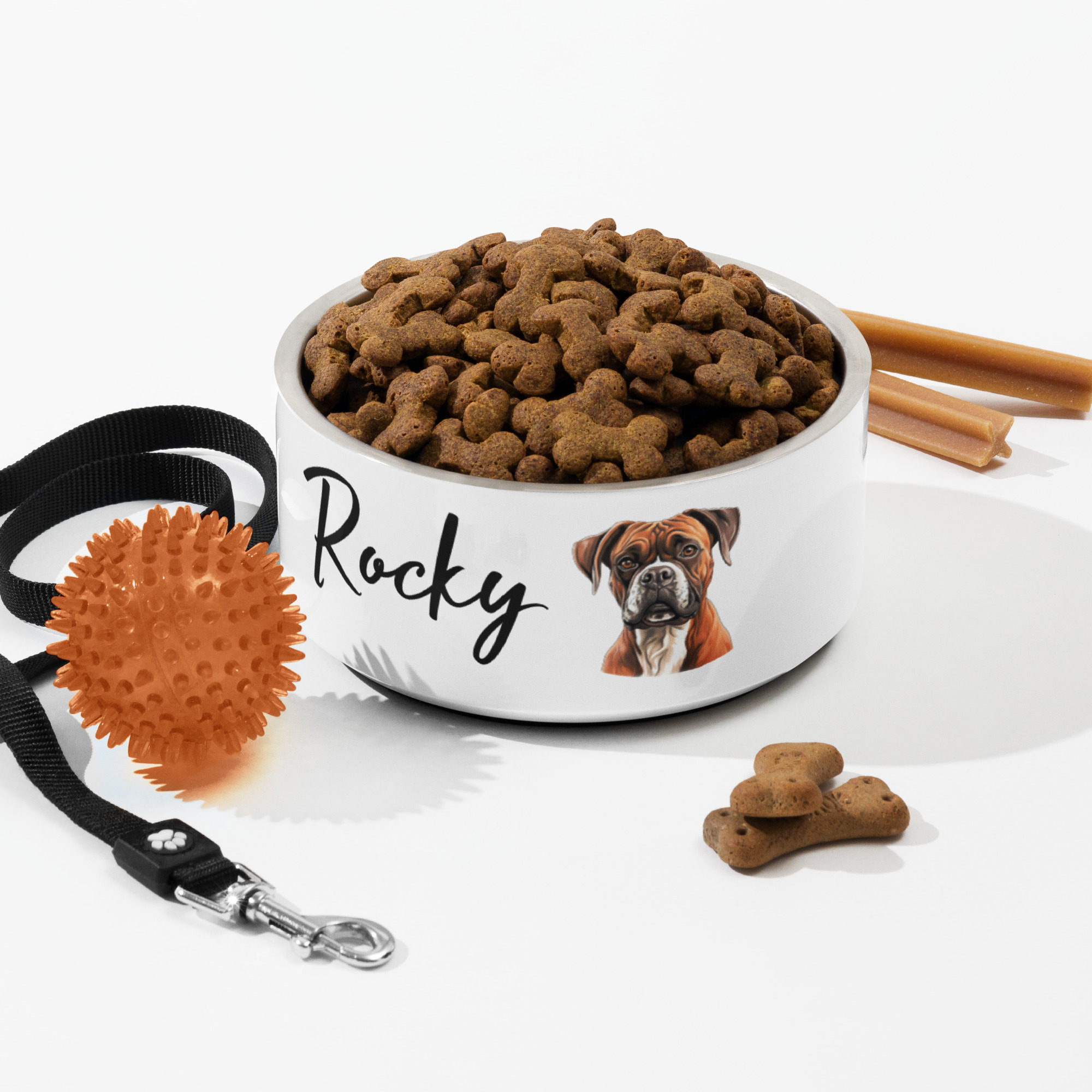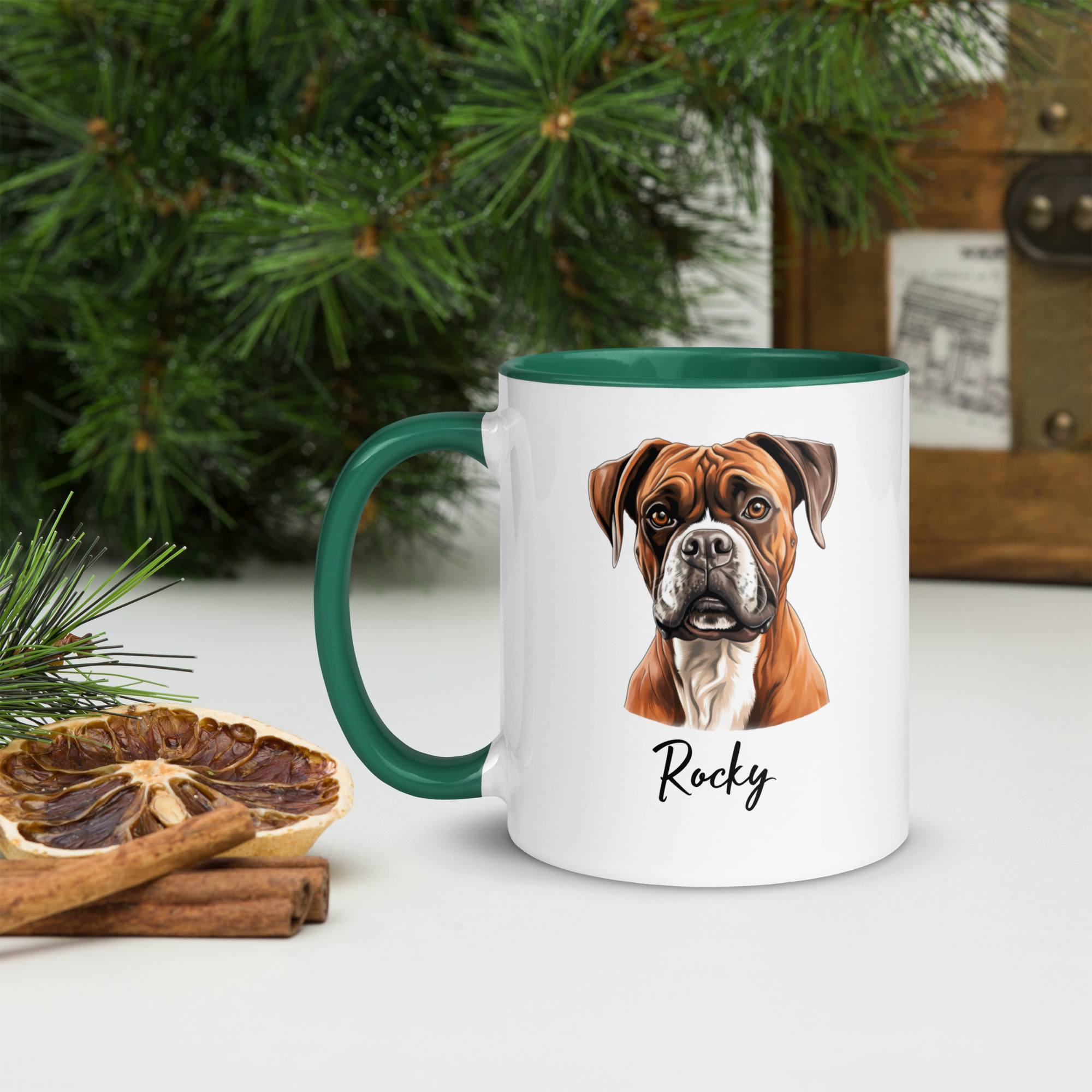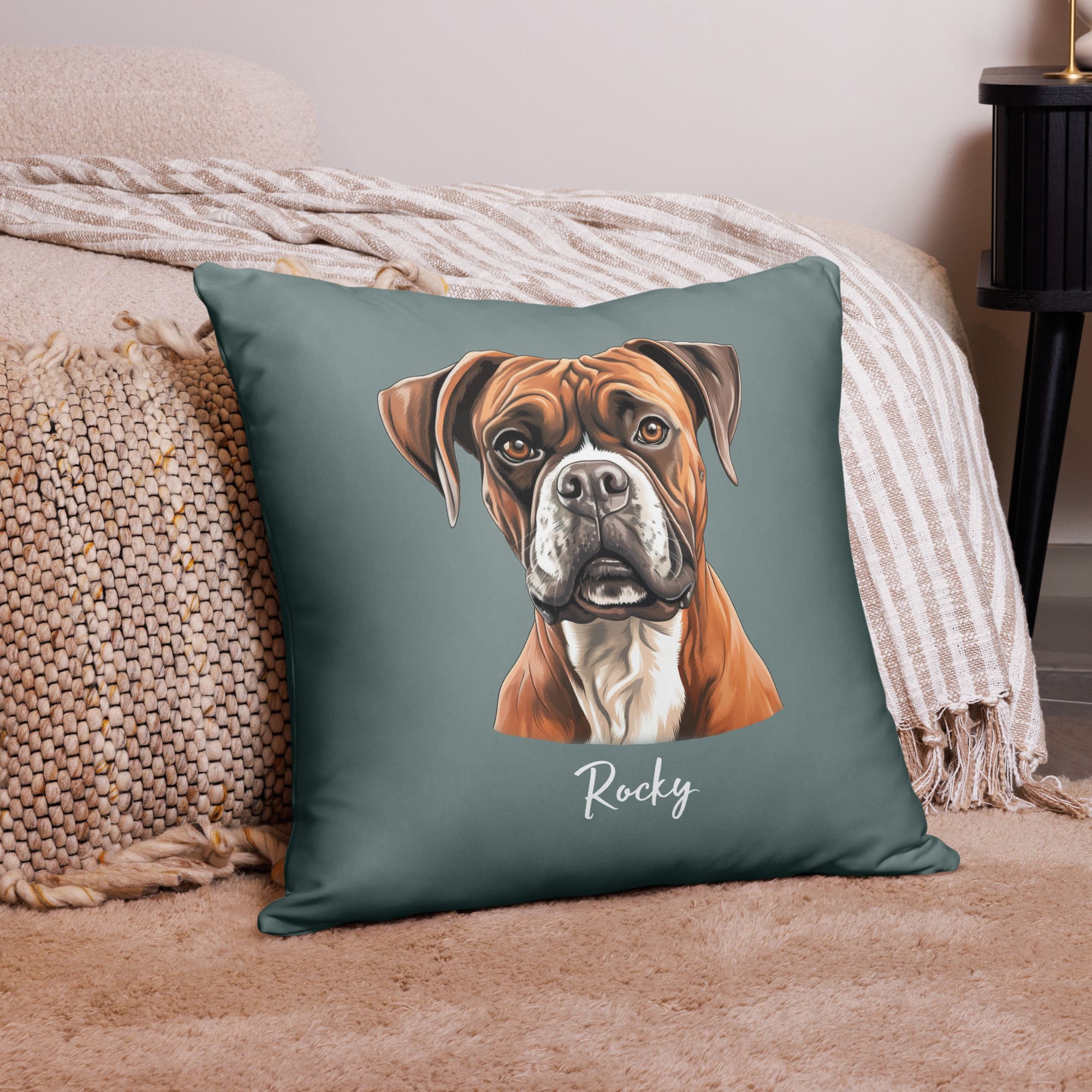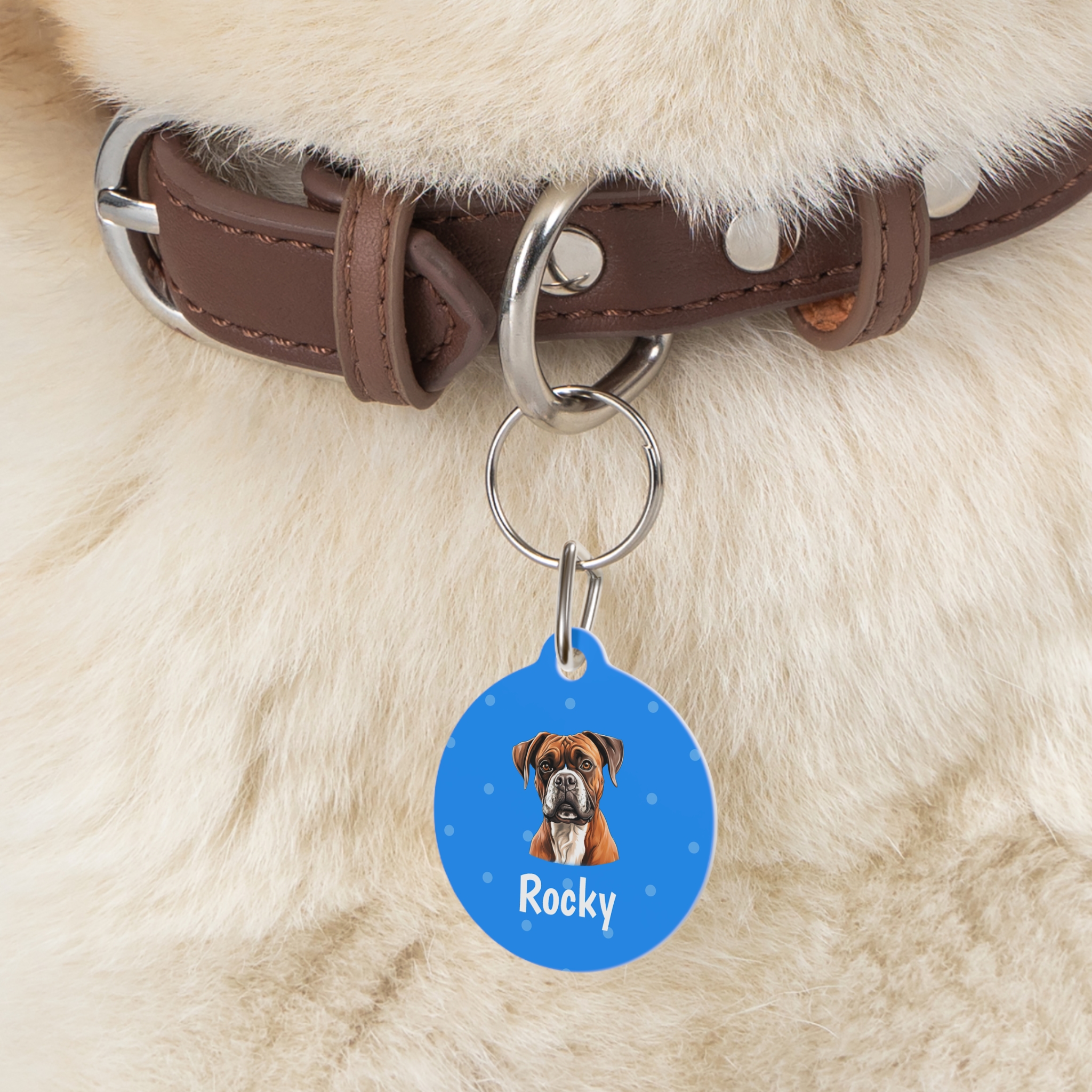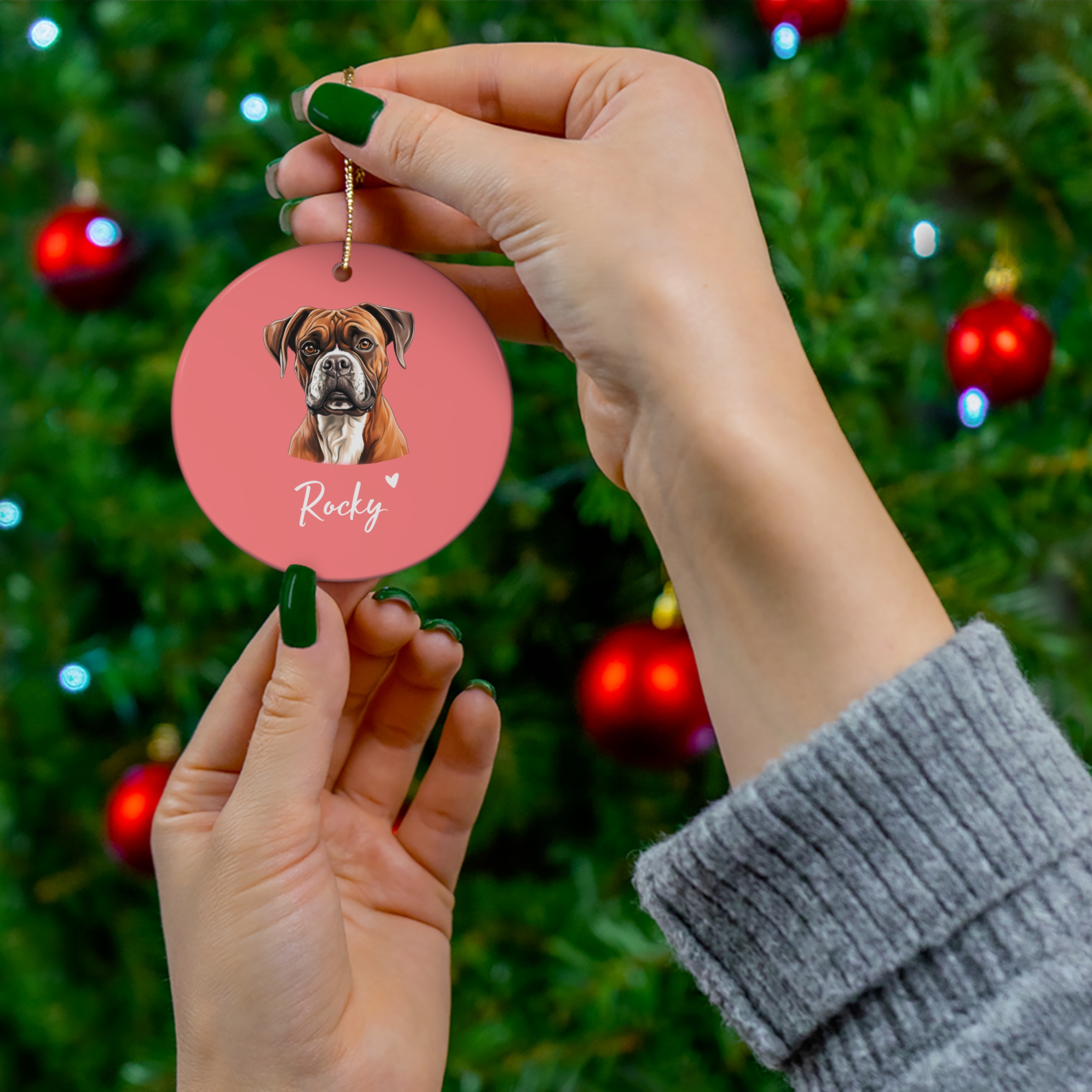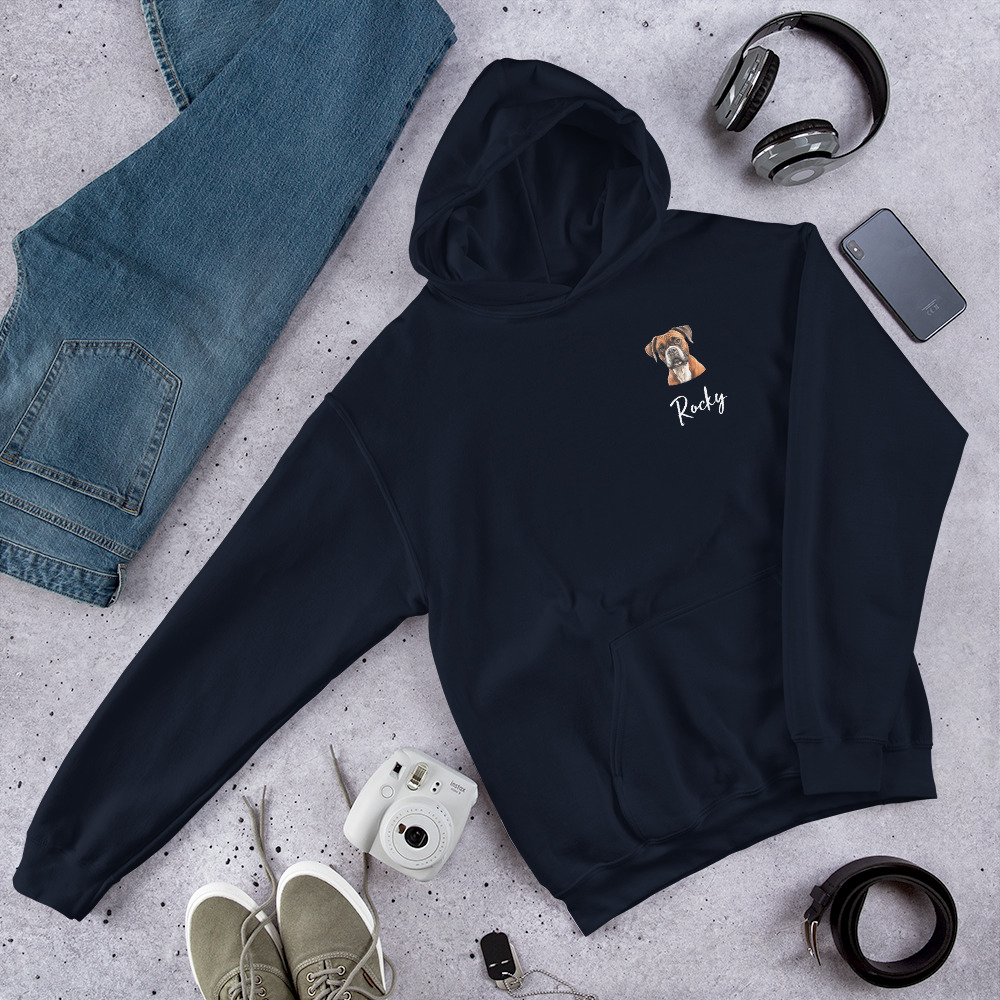Breed Overview
What to Know About: Boxer
The Boxer is a medium to large-sized breed known for its muscular build, athletic abilities, and expressive face. With its distinctively square jaw, wrinkled forehead, and soulful eyes, this breed carries an appearance of alertness and curiosity. Despite their strong and sturdy look, Boxers are typically affectionate, playful, and loyal, making them an excellent companion for families and individuals alike.
- Coat: Short, smooth
- Temperament: Friendly, playful, loyal, intelligent
- Exercise needs: 30-60 minutes of exercise per day
- Training: Easy to train with positive reinforcement
- Grooming: Weekly brushing
Dog Breed Characteristics
The Energetic and Loyal ‘Family Guardian’ of the Dog World
Weight
60-70 pounds (27-32 kg)
Height
21-25 inches (53-63.5 cm) tall at the shoulder
Origin
Germany
Life Span
10 to 12 Years
History and Origin
The Boxer’s history traces back to Germany in the late 19th century. The breed descends from the now-extinct Bullenbeisser, a German hunting dog known for its strength and courage, which was originally used for big-game hunting and bull-baiting. Crossbreeding with English Bulldogs helped refine the breed, lending the Boxer its distinctive appearance and unique combination of agility and power. While initially used for hunting and as a working dog, the Boxer evolved into a versatile companion, known for its intelligence, loyalty, and protective instincts.
Boxers gained popularity in the early 20th century and were officially recognized by the American Kennel Club (AKC) in 1904. Their roles expanded from hunting to include service as military dogs, guard dogs, and eventually as beloved family pets due to their friendly nature and adaptability.
Physical Characteristics
The Boxer is instantly recognizable thanks to its strong, athletic build and distinct facial features. They have a deep chest, powerful legs, and a sleek, short coat that exudes both elegance and power.
Size and Weight
Boxers typically stand between 21 to 25 inches tall at the shoulder. Males generally weigh between 65 to 80 pounds, while females are slightly lighter, averaging 55 to 70 pounds. Their build is compact yet muscular, reflecting their agility and strength.
Coat Colors and Patterns
Boxers come in two primary coat colors: fawn and brindle. Fawn can range from a light tan to a deep reddish-brown, while brindle Boxers have a striped pattern that can vary in density and intensity. White markings are common, often appearing on the chest, face, and paws, but too much white is considered undesirable for show standards. The coat itself is short, smooth, and lies close to the body, making grooming relatively easy.
Lifespan and Health Considerations
On average, Boxers live between 10 to 12 years. With proper care and regular vet check-ups, some Boxers can live even longer. However, like all breeds, they are susceptible to certain health conditions, including heart issues, hip dysplasia, and cancer. Preventive care and early detection are crucial for ensuring a long, healthy life.
Temperament
Boxers are renowned for their spirited and playful personalities. They are affectionate with family members and are known to form particularly strong bonds with children, often taking on a protective yet gentle role. Their exuberance and zest for life make them a joy to be around, but their high energy levels can be challenging if not properly managed.
General Disposition
Boxers are inherently social and crave human companionship. They are happiest when they are part of the family’s daily activities and will often follow their owners around the house to remain close. Though generally friendly, Boxers can be wary of strangers and have a natural guarding instinct, making them excellent watchdogs.
Behavioral Traits
Boxers are highly intelligent and eager to please but are also known for their occasional stubbornness. This can be challenging for first-time dog owners, but with consistency and positive reinforcement, Boxers can excel in training. Due to their intelligence and energy, Boxers need ample mental and physical stimulation to prevent boredom and destructive behavior.
Boxer in numbers
Boxer Breed by the Numbers
Explore some key statistics and interesting percentages that highlight the Boxer’s unique traits, health considerations, and overall characteristics.
Things to Know When Owning a Boxer
Diet and Nutrition
A well-balanced diet is essential for maintaining a Boxer’s health and vitality. High-quality dog food that meets the breed’s specific nutritional needs is recommended. Portion control is crucial as Boxers can be prone to weight gain, especially if they do not get enough exercise. Supplements like glucosamine and fish oil can be beneficial for joint health and coat condition.
Exercise Needs
Boxers are a high-energy breed that thrives on activity. They require at least 30 minutes to two hours of exercise daily, depending on their age and energy levels. Activities like brisk walks, playtime, agility training, and interactive games like fetch are ideal for keeping a Boxer mentally and physically engaged. Without enough exercise, they can become bored and may develop unwanted behaviors such as excessive barking or chewing.
Grooming
The Boxer’s grooming needs are relatively simple due to their short coat. Weekly brushing helps remove loose hair and keeps their coat shiny. Bathing is only necessary when they get dirty or develop a “doggy” odor. Regular nail trimming, ear cleaning, and dental hygiene should also be part of their grooming routine.
Training
Boxers respond best to positive reinforcement training methods, such as treats and praise. Early socialization and basic obedience training are crucial to help them develop good manners. Advanced training, including agility or obedience sports, can provide additional mental stimulation. Boxers enjoy learning new tricks and commands, so keeping training sessions fun and engaging is important.
Health Considerations
Common Health Issues
Boxers are prone to certain health issues such as hip dysplasia, heart conditions (e.g., arrhythmogenic right ventricular cardiomyopathy), and certain cancers. Regular veterinary check-ups and a proactive approach to health care are essential for early detection and treatment. Some Boxers may also develop allergies or digestive issues, so monitoring their diet and environment is important.
Lifespan and Aging
With proper care, most Boxers live between 10 to 12 years. As they age, their activity levels and dietary needs may change, and they may require special care for conditions such as arthritis or diminished mobility. Regular vet visits and appropriate adjustments to their diet and exercise can help them enjoy a comfortable, happy life during their senior years.
Living with a Boxer
Home Environment
Boxers are adaptable and can thrive in various living situations as long as they receive adequate exercise and mental stimulation. They can live in apartments or homes with small yards but prefer environments where they have space to run and play. Because they are a social breed, Boxers do not do well when left alone for long periods and may develop separation anxiety.
Compatibility with Other Pets
Boxers are generally good with other dogs, especially if they are raised together or properly socialized. However, caution should be exercised around smaller animals due to their strong prey drive. Early socialization and consistent training can help Boxers coexist peacefully with other pets.
Fun Facts
- The name “Boxer” is thought to come from the breed’s playful habit of using its front paws to bat objects or other animals, similar to a human boxer throwing punches.
- Boxers have been featured prominently in various media, from TV shows to advertisements, due to their expressive faces and engaging personalities.
- During both World Wars, Boxers served as messengers, guard dogs, and even pack carriers, showcasing their versatility and loyalty.
Final Thoughts
Boxers are a delightful blend of strength, agility, and affection. They are known for their unwavering loyalty, playful nature, and protective instincts, making them an ideal companion for active families. While they can be a handful due to their high energy levels and strong personalities, their loving nature and spirited disposition make them a rewarding breed for those willing to invest the time and effort into their care and training.
Shop Boxer Gifts: Perfect for Dog Lovers
Discover our selection of print-on-demand gifts tailored for Boxer enthusiasts.
Personalized Boxer Dog Bowl
31,00 € – 35,00 €Product Details:
• Personalization Available (See Below)
• Double-wall stainless steel
• Anti-slip rubber base
• Food grade safe
• Dishwasher safe when the rubber base is removed
Boxer Personalized Mug
14,00 € – 15,00 €Product Details:
• Personalization Available (See Below)
• Ceramic
• 11 oz mug dimensions: 3.79″ (9.6 cm) in height, 3.25″ (8.3 cm) in diameter
• 15 oz mug dimensions: 4.69″ (11.9 cm) in height, 3.35″ (8.5 cm) in diameter
• Colored rim, inside, and handle
• Dishwasher and microwave safe
Boxer Personalized Dog Pillow
23,00 € – 26,00 €Product Details:
• Personalization Available (See Below)
• 100% polyester case and insert
• Fabric weight: 6.49–8.85 oz/yd² (220–300 g/m²)
• Hidden zipper
• Machine-washable case
• Shape-retaining polyester insert included (handwash only)
Boxer Personalized Dog Tag
18,00 €Product Details:
• Personalization Available (See Below)
• Print on both sides
• Material: white coated solid metal
• Size: 1″ round
• Metal clip included
Boxer Personalized Christmas Ornament
13,00 €Product Details:
• Personalization Available (See Below)
• 0.125″ (3mm) thick high-quality ceramic
• Glossy finish
• Available in 4 shapes – Snowflake, Star, Heart and Circle
• One-sided print
• Hole and gold-toned hanging string included
• The height of the hole can slightly deviate
• NB! Each pack contains a single ornament
Personalized Boxer Breed Hoodie
33,00 € – 37,00 €Product Details:
• Personalization Available (See Below)
• 50% pre-shrunk cotton, 50% polyester
• Fabric weight: 8.0 oz/yd² (271.25 g/m²)
• Air-jet spun yarn with a soft feel and reduced pilling
• Double-lined hood with matching drawcord
• Quarter-turned body to avoid crease down the middle
• 1 × 1 athletic rib-knit cuffs and waistband with spandex
• Front pouch pocket
• Double-needle stitched collar, shoulders, armholes, cuffs, and hem




